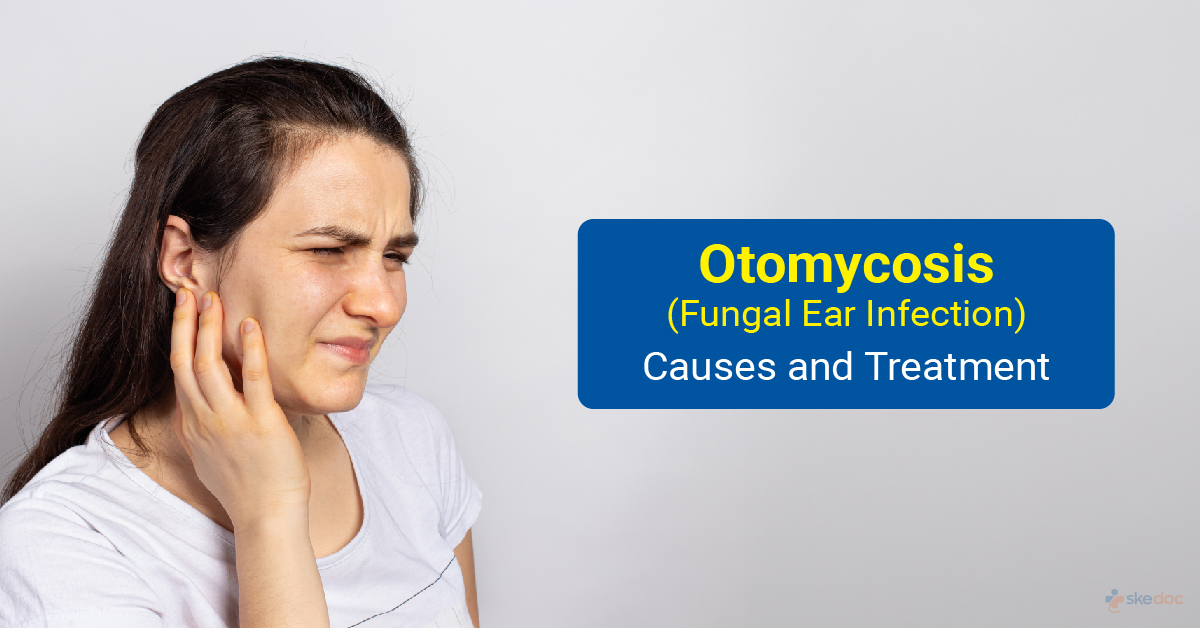Allergy
Blood Diseases
Bone & Joints
Brain
Cancer
Child Care
Cosmetic Surgery
Diabetes
Endocrinology
ENT
Eye
Gen Medicine
General Surgery
Heart
Kidney
Lifestyle
Liver & Digestive
Lung
Men’s Health
Mental health
Physiotherapy
Rheumatology
Skin and hair
Sleep Disorders
Spine
Transplant
Women Health
Thyroid
Vascular Surgery
Otomycosis

What is Otomycosis?
Otomycosis, also known as Fungal Otitis Externa, is inflammation and fungal infection of the ear lobe, external auditory canal, or both. It is more common in regions of the world with a tropical climate. It can affect individuals of any age group and can affect either one or both ears.
Is otomycosis condition a medical emergency?
Otomycosis is not a medical emergency.
Types
Otomycosis may be classified as:
- Primary Otomycosis: The presence of fungal infection in the absence of middle ear pathology and perforation of the eardrum
- Secondary Otomycosis: The presence of fungal infection along with a history or presence of otitis media, surgical interventions, immunocompromised status, or fungal infection in other parts of the body.
Causes
Otomycosis is caused due to an infection with a fungus, resulting in inflammation, erosion of the surface layers of the skin, and accumulation of debris containing fungal hyphae, formation of pus, and pain. Fungal infection is usually a result of moisture trapped in the external auditory canal. In a majority of cases, the fungi responsible are Aspergillus and Candida. In some cases, there may be a superimposed bacterial infection, which can further complicate the condition. The presence of excess cerumen or the complete absence of cerumen, high humidity, retained water in the ear canal, warm temperature, and local trauma can predispose to otomycosis.
Some causes of otomycosis include:
- Excessive use of antibiotic ear drops
- Excessive drying and cleaning of the ear canal
- Instillation of oil into the ear
Risk factors
Factors that increase the risk of Otomycosis include:
- Age – more common in the elderly, young adults, and children between 7-2 years
- Previous episodes of otitis externa
- Swimming, diving, or participation in water sports
- Prolonged use of earplugs
- Excessive cleaning with earbuds
- Hot and humid weather conditions
- Use of hearing aids
- Immunocompromised health status
- Diabetes mellitus
- Vaginal candidiasis
- Eczema
- Allergic rhinitis
- Asthma
- Malnutrition
- Leukopenia
Symptoms & signs
The signs and symptoms of otomycosis may include:
- Itching
- Pain
- Swelling and redness
- The feeling of blocked ears
- Tinnitus
- Foul-smelling grey-white cheesy discharge
- Scaling of the skin on the earlobes
- Loss of hearing
Investigations
Some investigations that are advised for the evaluation of otomycosis include:
- Otoscopy: A thorough ear examination with an otoscope is done
- Laboratory tests:
- CBP & ESR
- Blood glucose: To rule out diabetes
- Complete urine analysis: To rule out diabetes
- Culture and sensitivity analysis of ear discharge
- Imaging tests:
- High-resolution CT scan: To detect bony erosion
- MRI scan: Done if soft tissue involvement is suspected
- Radionuclide bone scan: If bone involvement is suspected in subacute or chronic cases
Diagnosis
A diagnosis of Otomycosis is established based on medical history, clinical evaluation, and investigations.
Treatment options
The treatment aims to manage pain, remove debris from the external auditory canal, and eradicate the infection. Surgical interventions may be required for the management of complications.
Medical management
Medical management of otomycosis may include:
- Analgesics: For the management of pain
- Topical Acetic Acid: For mild infections
- Topical Antifungal Agents: Such as clotrimazole for more severe infections
Interventional Management
Minor interventions in the form of debridement are done for the management of Otomycosis. Interventions include:
- Debridement: Helps to remove the debris from the external auditory canal, and improve the effectiveness of the topical medication.
- Ear Suctioning
- Anti Fungal drops
Role of Diet/ Exercise/ Lifestyle changes/ Preventive measures
Some measures that can be taken to manage and prevent otomycosis include:
- Keeping the ear canal dry during the course of the treatment
- Placing an earplug or cotton ball in the ear during showering or bathing
- Avoiding activities such as swimming or aquatic sports
- Avoiding the use of earbuds or other objects to clean the ear
- Avoiding excessive and frequent washing of the ears with soap
- Avoiding swimming in unclean and polluted water
- Avoiding instilling coconut oil or other oils into the ear
Prognosis
The prognosis for otomycosis is generally very good with most cases resolving with treatment. The prognosis is poorer in individuals who are immunocompromised when prompt and effective management is not done.
When to contact the doctor or hospital? / How to identify the emergency or complications?
It is advisable to seek medical attention if the signs and symptoms of otomycosis are observed.
Indications for hospitalization if required
Hospitalization is not required for the management of otomycosis.
Suggested clinical specialist/ Department to consult for this condition
- Otorhinolaryngology (ENT)
Was this article helpful?
YesNo




